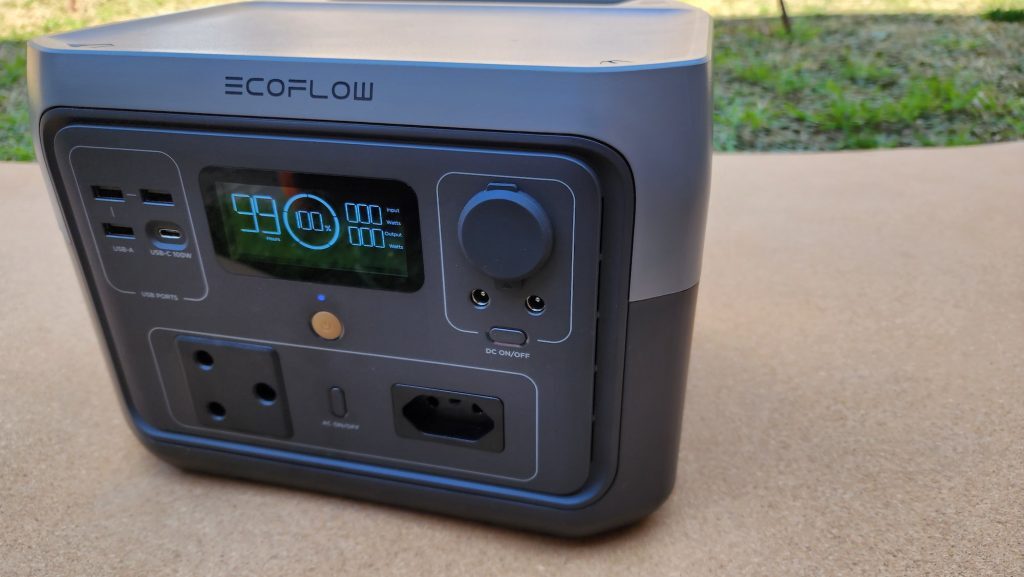You're paying a premium price but you're also getting a premium product. The Ecoflow River 2 Max's build is excellent, it's well put-together, and smaller features like automatic failover and app support make a case for paying thirteen grand for this battery. If that fails, the fact that it's excellent hardware in itself should do the job.
-
Price
-
Ease of use
-
Battery
-
Practicality
One day, South Africans will no longer need to rely on backup power to get through the day. But, to quote Aragorn II, Heir of Elendil, “today is not that day”. In the absence of the Light of Eärendil (Galadriel’s gift to Frodo, if you’re feeling a little lost), it’s a good idea to have something like the Ecoflow River 2 Max on hand.
For those not familiar with the brand, Ecoflow makes some of the most impressive backup batteries we’ve ever encountered. Of course, they’re usually accompanied by equally impressive prices but that’s the nature of technology. It’s rare to find better tech cheaper than anywhere else (but not out of the question). Here, expect to pay about R13,000. If you’re planning to avoid load shedding, that’s about what it’ll cost to do so in moderate comfort.
One hand clapping
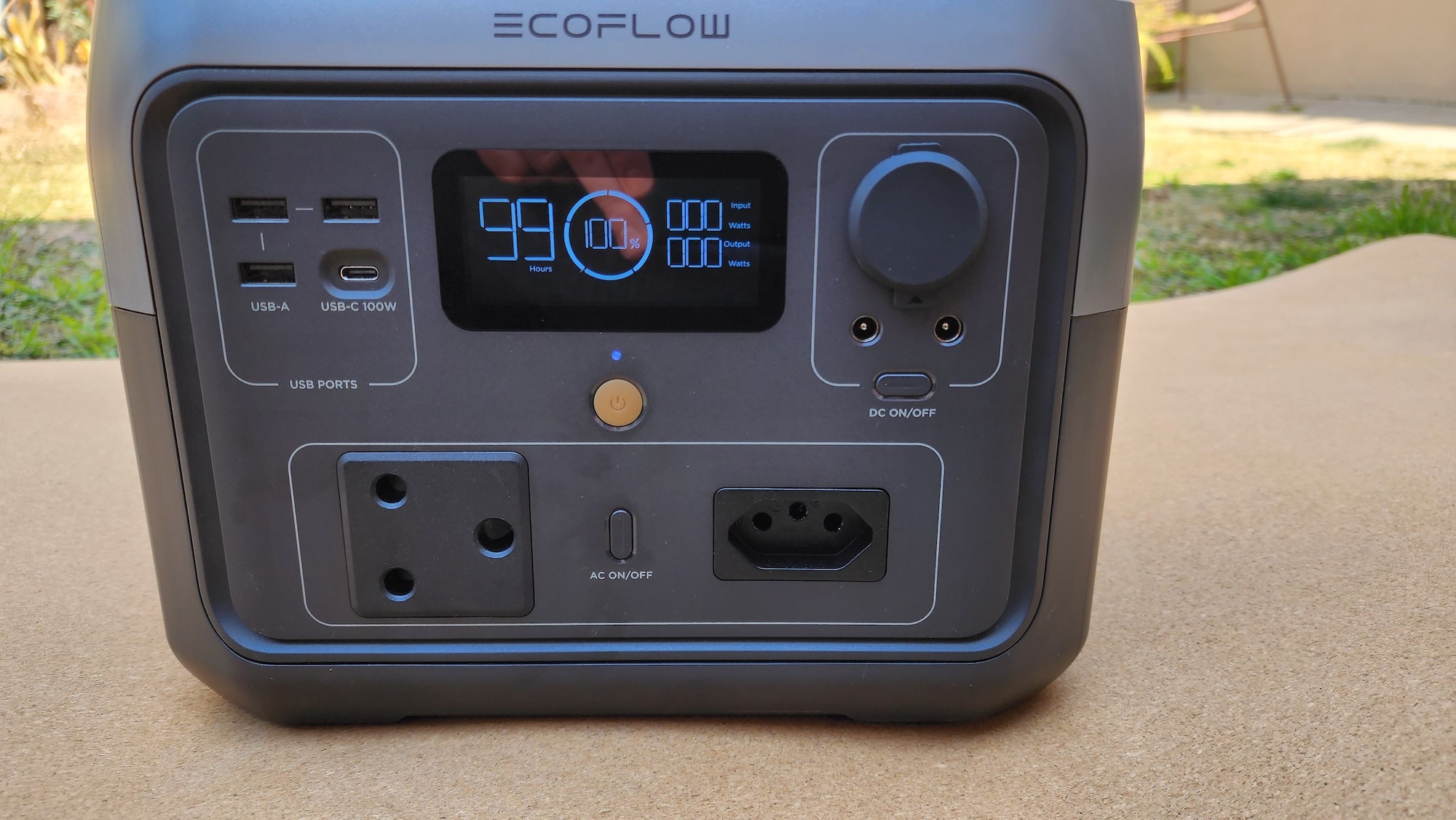 The River 2 Max is relatively lightweight, as far as batteries with this sort of capacity go. The front end is made up of ports, as is the case with every other battery backup on the planet. Ecoflow’s layout isn’t anything special but it is neat. The USB ports are always active, being controlled by the main power button, but the 12-volt/DC section on the right of the LED display and the AC sockets each have their own power buttons. Maybe it’s an efficiency thing. We weren’t about to dismantle the battery to find out. It’s far too useful for that.
The River 2 Max is relatively lightweight, as far as batteries with this sort of capacity go. The front end is made up of ports, as is the case with every other battery backup on the planet. Ecoflow’s layout isn’t anything special but it is neat. The USB ports are always active, being controlled by the main power button, but the 12-volt/DC section on the right of the LED display and the AC sockets each have their own power buttons. Maybe it’s an efficiency thing. We weren’t about to dismantle the battery to find out. It’s far too useful for that.
Most of the six-kilogram weight of the River 2 Max is located toward the front end of the battery. That explains (sort of) why Ecoflow has opted for a single carry handle, located along the upper back edge, as opposed to a handle on either side. The short answer: it’s not heavy enough for that to be necessary. The battery loses some potentially pleasing design symmetry but you’ll mostly be using this thing in the dark. Who really cares what it looks like? Us, obviously, but it’s almost the least important thing about it.
Give it a plug
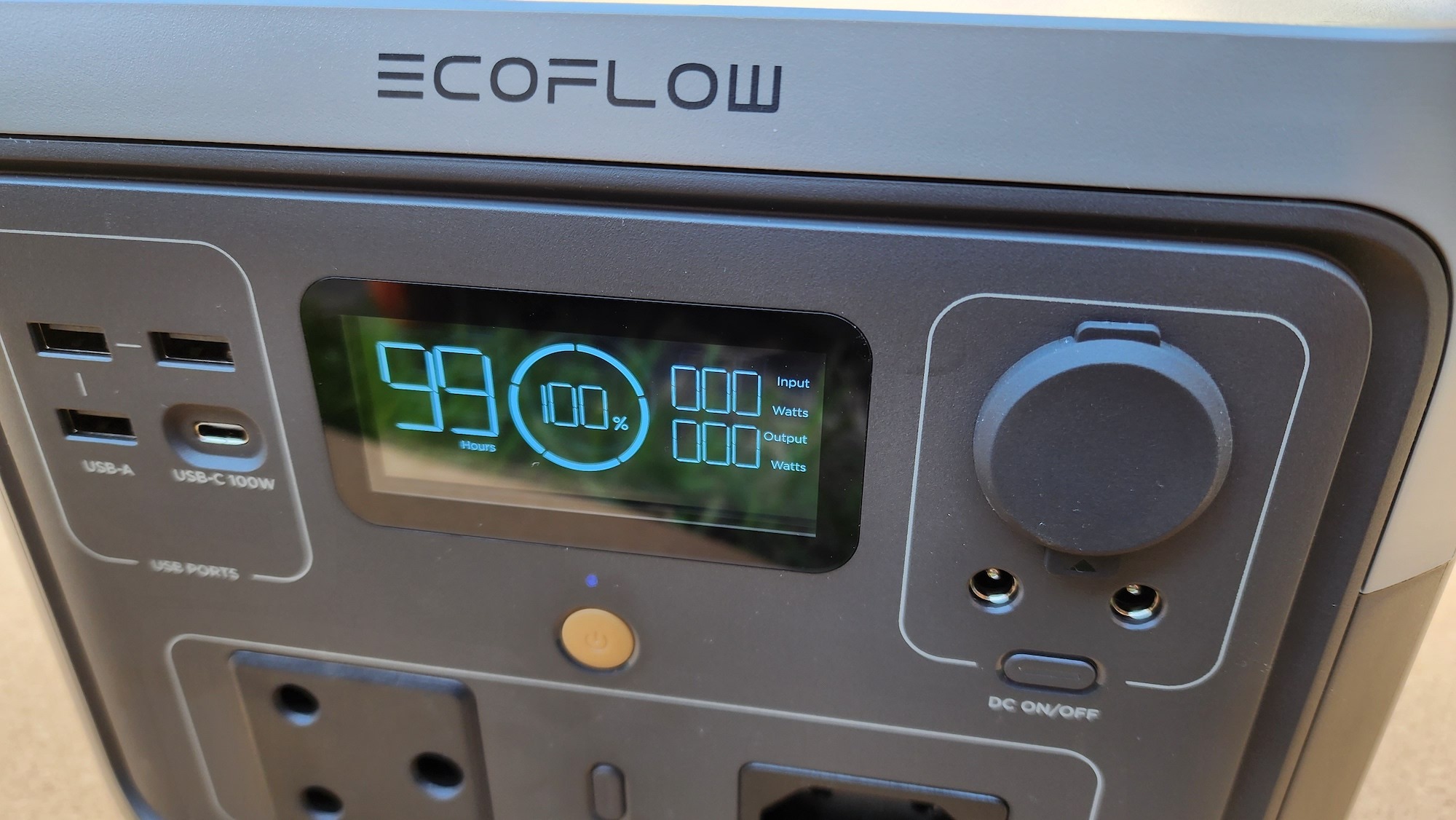 Operation is remarkably simple. Press power button, press AC or DC button. Connect devices. Bask in the warmth of a powered screen until Eskom gets its act together. Charge. Repeat. There are a few minor issues to keep in mind when it comes to usage. Plug-and-play is about as complicated as it gets but there’s a slight delay between turning on the main power and the AC/DC buttons responding.
Operation is remarkably simple. Press power button, press AC or DC button. Connect devices. Bask in the warmth of a powered screen until Eskom gets its act together. Charge. Repeat. There are a few minor issues to keep in mind when it comes to usage. Plug-and-play is about as complicated as it gets but there’s a slight delay between turning on the main power and the AC/DC buttons responding.
When charging, the River 2 Max is commendably fast. Ecoflow reckons it’ll take a maximum of sixty minutes to get up to a full charge and we believe them. We’ve yet to run it completely flat during a two-and-a-half hour load shedding but it’s always up and ready to go before forty minutes has passed. That’s almost the only time you’ll hear the internal fans kick in and even then Ecoflow’s battery makes hardly any noise. One finicky bit is that we found ourselves powering the battery off when charging was done. It might do that automatically but some better ‘last state’ memory would have been nice.
AC power draw supports a 500W cap but there’s an option you can toggle called X-Boost which permits up to 1,000W of power draw but there’s probably a reason you’ve got to actively turn that on. 3,000 charge cycles may be the rated lifespan of this Lithium Iron Phosphate (LiFEPO4) but you’ve probably got to be sensible about it.
Be smart about it
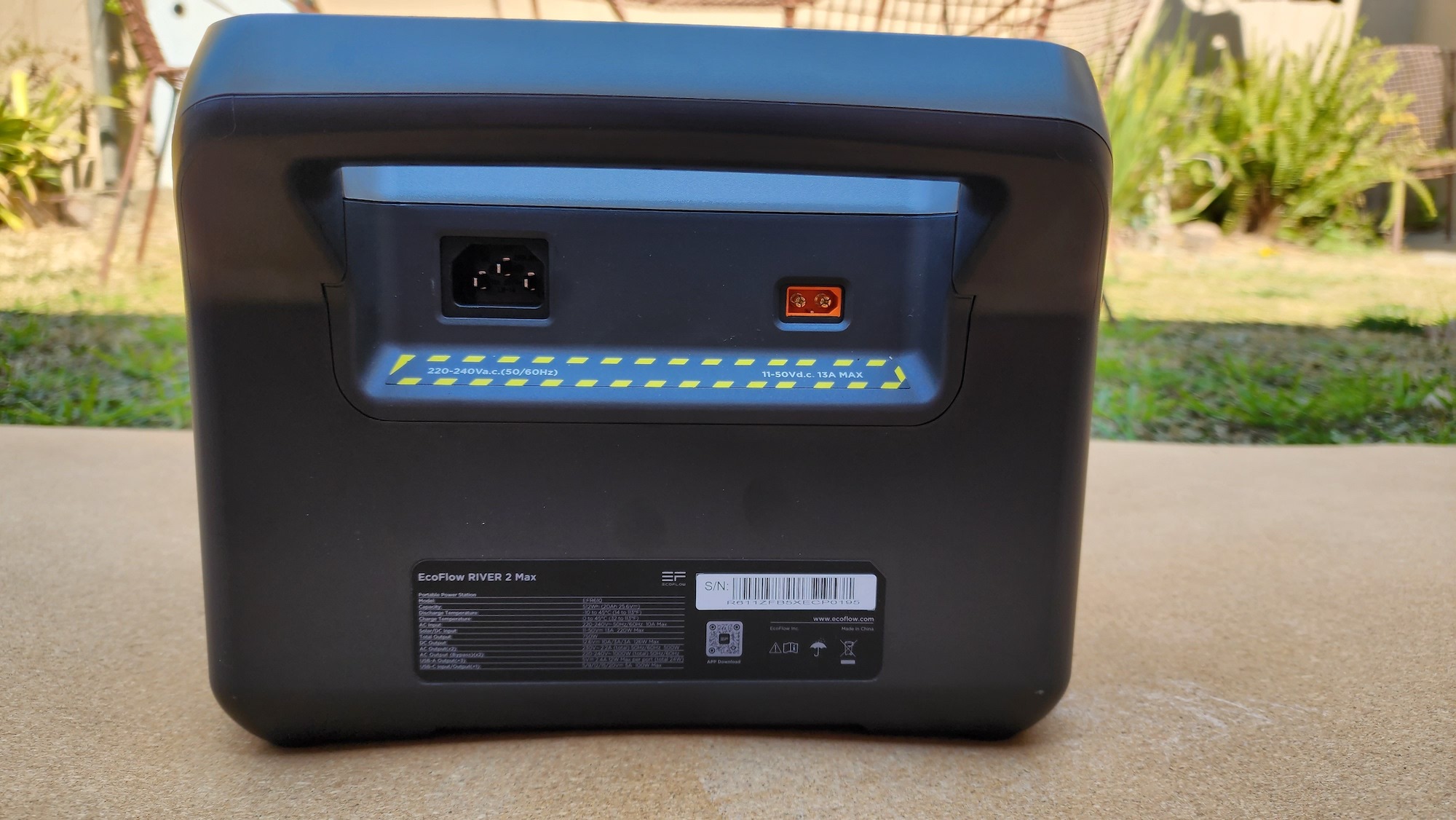 If you’re willing to put in the work (and even if you’d rather not) there are some smart features to look forward to. App control is one of those but you’ll get the most mileage from Ecoflow’s app if you’re using multiple devices. If it’s just the River 2 Max that you’re connecting, expect to monitor battery levels, set charge speeds, and other very basic functions. It’s a neat way to get an idea of the scale of Ecoflow’s ecosystem. You could populate your home with the brand’s tech. It’s… not a terrible idea.
If you’re willing to put in the work (and even if you’d rather not) there are some smart features to look forward to. App control is one of those but you’ll get the most mileage from Ecoflow’s app if you’re using multiple devices. If it’s just the River 2 Max that you’re connecting, expect to monitor battery levels, set charge speeds, and other very basic functions. It’s a neat way to get an idea of the scale of Ecoflow’s ecosystem. You could populate your home with the brand’s tech. It’s… not a terrible idea.
But most of us will probably be stuck with just the one battery. In that case, it’s possible to set the River 2 Max (and most Ecoflow batteries) as an automatic failover for your most essential tech. In our case, that would be a TV and a couple of extras. The 30ms response time means that you barely drop any frames when the Shed kicks in and there are few feelings better in modern-day South Africa than continuing to do something electricity related when the lights go out everywhere else.
Charging the unit is as simple as connecting it to the mains. Ecoflow is very pedantic that you use the supplied chord and no others (seriously, the chord has a warning on it) but there’s also space to connect solar panels, in case you really want to give Eskom the finger. Or you’re camping. You know, you do you.
Ecoflow River 2 Max verdict
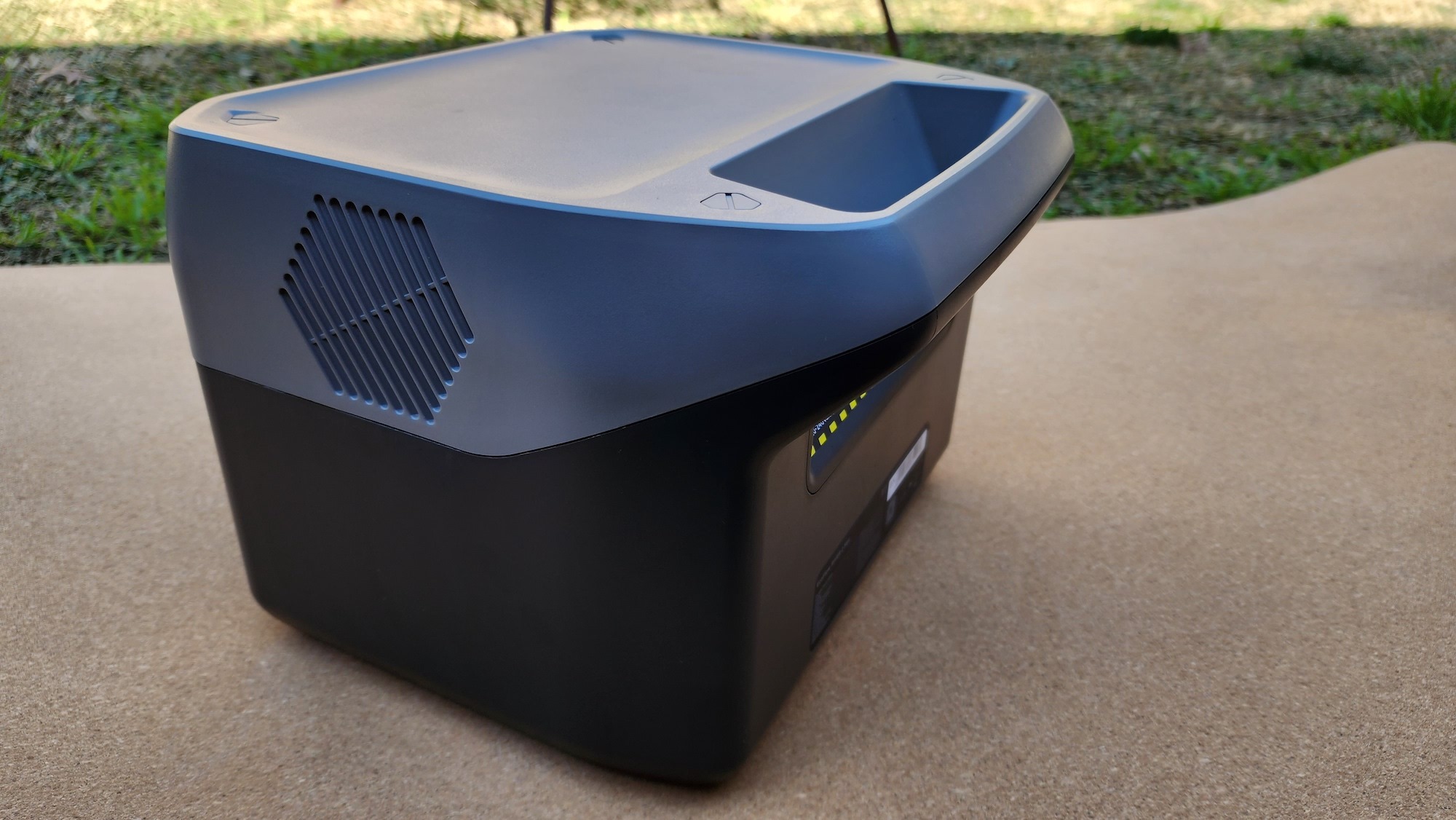 There is amazingly little to complain about with Ecoflow’s River 2 Max. We don’t throw the term ‘perfect’ around much (and we’re not going to here) but it seems that the only portable battery better than this one is a larger Ecoflow model. It’s compact, quiet, and capable, and that price isn’t going to terrify you too hard. It’s possible to get a similar battery capacity and power rating for less but you’ll be losing some smart features, design, and it’ll almost certainly be (at least a little) louder. At least with the River 2 Max, you’ll keep your essentials powered and only have to listen to them operating.
There is amazingly little to complain about with Ecoflow’s River 2 Max. We don’t throw the term ‘perfect’ around much (and we’re not going to here) but it seems that the only portable battery better than this one is a larger Ecoflow model. It’s compact, quiet, and capable, and that price isn’t going to terrify you too hard. It’s possible to get a similar battery capacity and power rating for less but you’ll be losing some smart features, design, and it’ll almost certainly be (at least a little) louder. At least with the River 2 Max, you’ll keep your essentials powered and only have to listen to them operating.

